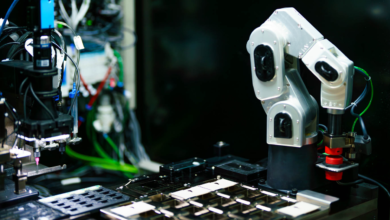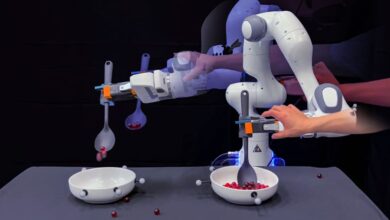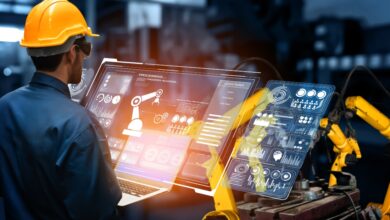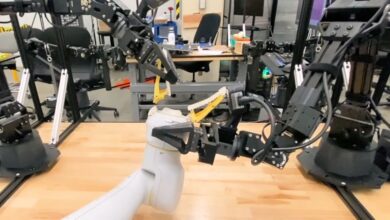Amazon Executive Debunks Job Loss Myths Due to Robotics

In the face of widespread concern about the impact of automation on employment, an Amazon executive has emphasized that robotics and advanced technology are actually enhancing job roles rather than eliminating them. Stefano La Rovere, who oversees robotics, mechatronics, and sustainable packaging globally for Amazon, shared insights about the positive relationship between technological advancement and workforce development.
La Rovere addressed common misconceptions during an interview on CNBC’s “Street Signs Europe,” explaining how the integration of new technologies has been beneficial for the workforce. In Amazon’s fulfillment centers across Europe, over 50,000 roles have reportedly been improved through the adoption of innovative tools and processes.
Rather than displacing staff, Amazon’s investment in technology has led to the creation of new job categories and skill sets, according to La Rovere. This has enabled Amazon employees to pursue career growth and development opportunities that were not previously available. La Rovere highlighted that reductions in physically strenuous activities, such as heavy lifting and repetitive tasks, have been made possible through the assistance of robotic systems. These improvements not only enhance safety and efficiency but also free up employees to focus on more skilled and engaging work.
Amazon’s implementation of technology has run parallel with continuous job creation. New positions related to robot and AI operations, for example, reflect the evolution of the labor market. These emerging roles highlight a shift toward a more technologically integrated workforce within the company.
Technology, Employment, and Industry Evolution
The discussion about the impact of robotics and advanced technology on employment is particularly relevant in today’s rapidly evolving industrial landscape. Companies like Amazon are at the forefront of integrating robotics into their operations, a trend that is reshaping the future of work. As Stefano La Rovere, the executive overseeing robotics at Amazon, suggests, such advancements can enhance job roles rather than eliminate them.
Positive Influence of Technology on Employment
In many of Amazon’s fulfillment centers, the implementation of robotics and automation has led to the enhancement of over 50,000 roles, showing a trend that might reflect on the industry as a whole. La Rovere’s emphasis on job enhancement aligns with the broader narrative that technology can be a catalyst for workforce development. It can replace mundane and physically challenging tasks with jobs that require more cognitive skills, such as technology management, problem-solving, and decision-making.
Industry and Market Forecasts
Market forecasts indicate that the global robotics industry is expected to continue growing, particularly with the increasing adoption of automation in various sectors including manufacturing, healthcare, and logistics. The role of robotics is not only about substituting human labor but also about creating new markets and opportunities. As these technologies become more integrated into our daily lives, the demand for skilled workers who can design, maintain, and operate these systems is likely to increase.
Emerging Job Categories and Skill Sets
One of the salient points in the shift towards an automated workplace is the emergence of new job categories. Jobs related to robot and AI operations are becoming increasingly prevalent, signifying a shift toward a more technologically integrated workforce. These roles typically require a set of new skills including programming, data analytics, digital literacy, and robot maintenance. Continuous learning and upskilling are essential components in this transition, and businesses alongside educational institutions are striving to meet these new demands.
Industry-Related Issues
There are, however, issues related to this industry shift. One of the primary concerns is the potential for job displacement in the lower-skilled labor market. The transition may not be uniform across all sectors and demographics, raising the need for policies that support workforce transitions and retraining. Additionally, ethical issues surrounding surveillance, data privacy, and the role of AI in decision-making are increasingly coming to the forefront.
Conclusion
The relationship between the adoption of new technologies and the development of the workforce is complex and multifaceted. While there are challenges and concerns that come with the integration of automation and AI into the working world, there are also many opportunities for enhancing job roles and creating new pathways for employment. The focus is shifting from traditional labor to work that requires a higher level of technical and problem-solving skills. As the industry continues to evolve, staying informed and adaptive will be key to harnessing the full potential of technological advancements. For further information about industry trends and impacts, consider visiting reputable technology and market research websites such as Gartner or Forrester.

Iwona Majkowska is a prominent figure in the tech industry, renowned for her expertise in new technologies, artificial intelligence, and solid-state batteries. Her work, often at the forefront of innovation, provides critical insights into the development and application of cutting-edge AI solutions and the evolution of energy storage technologies. Majkowska’s contributions are pivotal in shaping the future of sustainable energy and intelligent systems, making her a respected voice in both academic and industrial circles. Her articles and research papers are a valuable resource for professionals and enthusiasts alike, seeking to understand the impact and potential of these transformative technologies.



